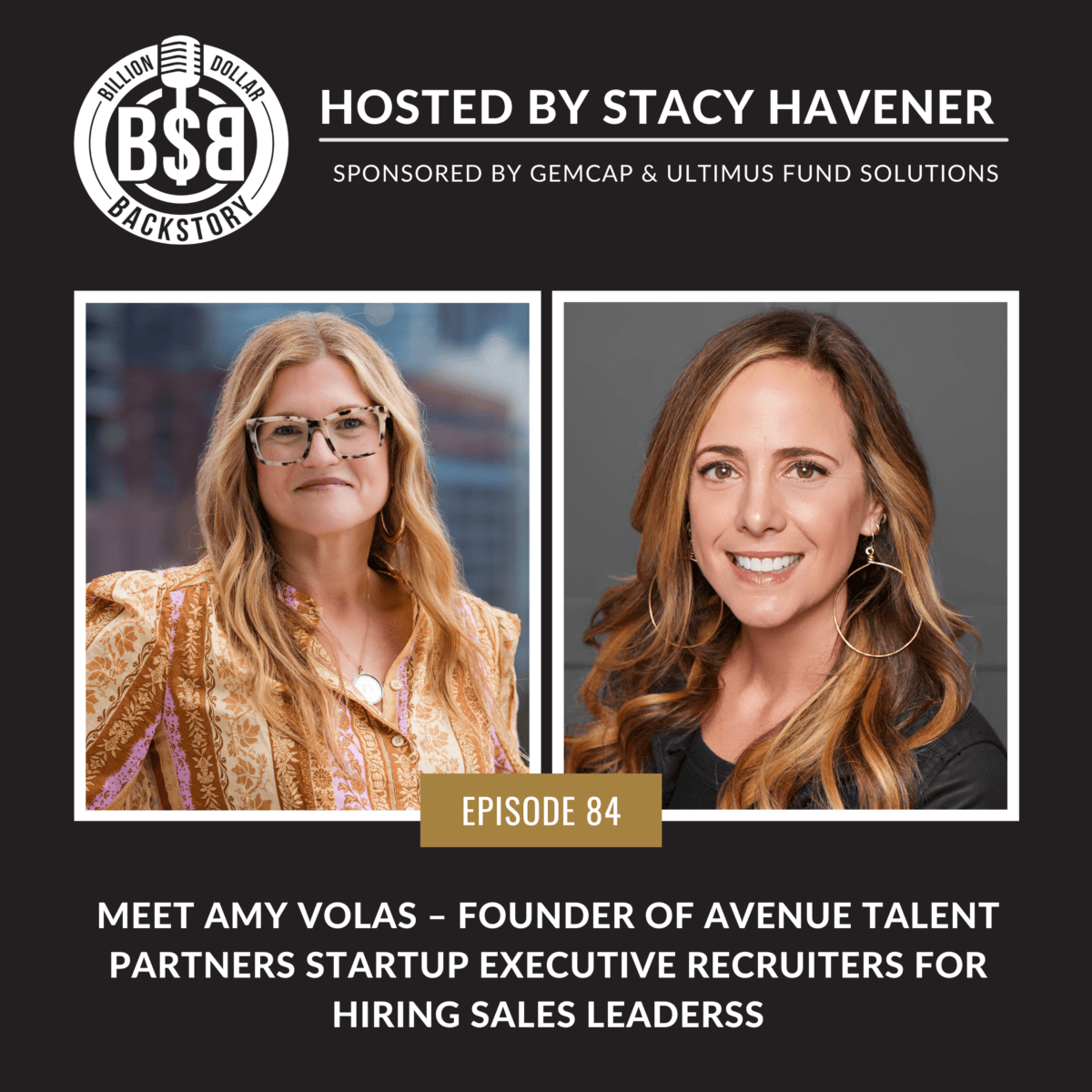
Executive Hiring Isn’t a Gamble… Unless You Make It One
Hiring the wrong GTM (go-to-market) executive isn’t just a mistake. It’s a ticking time bomb.
Get it right? You’ve got a strategic partner who drives results, aligns teams, and unlocks growth.
Get it wrong? And you’re signing up for at least a six-figure disaster dragging your company backward with stalled momentum, eroded trust, and a painful do-over.
Most founders or CEOs don’t have time, patience, or money to place risky executive hire bets… yet, they do it anyway.
They rush. They rely on gut instinct rather than a high-stakes, high-impact process. And they pay the price.
Here’s the truth: The best executive hires don’t just land in your lap.
Even with an incredible network, pushing the job out across social channels, and a hiring team (internal or external) doesn’t guarantee the right needle can be found in those haystacks. In fact, 93% of the referrals we receive at ATP + the people introduced to our customers during the hiring process = don’t fit the roles we’re working on.
If you want a great GTM, CRO, or tech executive, you need an executive hiring strategy that goes beyond asking “who do we know,” or assumptions, and digs into what actually drives success and failure for the job to be done in your business.
Let’s break down the biggest executive hiring pitfalls and how to avoid them.
Mistake #1: Chasing a Resume Instead of a Leader
You think you’re hiring an Allstar. They’ve got your industry experience, the impressive title, you’ve heard great things about them, and the killer LinkedIn profile. They blew the doors off of the business at [insert fancy brand we want to be when we get bigger]. So, surely they must be the “one” for your business. But five months in, they’re flailing. And you’re realizing too late… you hired a resume, not a leader you can count on.
A hard truth… That success doesn’t automatically translate to your business. “Best” for someone else or best together in the past doesn’t mean best for what is needed in your startup or business. A past title doesn’t tell you how they actually got results.
You don’t need “the best” executive. You need the right executive to adapt, strategize, deliver, and drive for your team, customers, and business.
Fix: Define Success Before You Define the Role
Before you think about sourcing candidates, answer these questions:
- Why do I need to hire for this role now?
- What are the five must-have’s this executive needs to give me confidence to hire them?
- How am I prepared to support them?
- How much do we have figured out versus how much do they need to create from scratch?
- Do I need more help with task-oriented or leadership-oriented items?
- How do I know what good looks like for this role?
- Am I willing to prioritize the hiring process?
You don’t need a big name and platitudes. You need someone who can execute on what your business needs right now, with the desire for this kind of work to back it up.
Mistake #2: Letting Charisma Win Over Competence
Every CEO, founder, and executive has been there. A candidate you were introduced to walks in, oozing confidence, telling you exactly what you want to hear. Their resume is shiny. Their references check out… at least the ones they gave you.
Fast-forward six months…
… They struggle to make decisions without a playbook or your guidance
… They overpromise and underdeliver
… They don’t have the influence they claimed
… The pipeline is in the toilet
… The team is in disarray
… They don’t know how to adapt
… The rest of your executive team has lost trust
… Your board isn’t happy and your rear end is in the hot seat
Fix: Go Beyond the Interview Performance
Here’s a quick test. Next time a candidate wows you in an interview, ask yourself, “Do I know how they will tackle the role? Are they answering my questions? Or are they just really good at talking”
Then, follow up with specific questions to dig below the surface and get to the root of their competence, ability to listen and synthesize what you’ve shared, and interest. Ask questions like:
- Given what you’ve learned thus far, what is the first thing you’d tackle first, how would you approach it, and why did you start here?
- What needs to be true for you to make ____ decision?
- How have you ____?
- What do you believe about our customers that most people in our industry get wrong and how did you land on this point of view?
Excellence in interviews aren’t sales pitches where both parties are trying to sell each other on an idea. Excellent interviews foster an environment to validate mutual alignment. When we’re aligned, there’s no need to sell… the opportunity sells itself.
Think meaty discussions to pull back the curtain to quantify and qualify what it will be like to work together.
Skill + Will + Leaning In to the process together = Alignment
Mistake #3: Hiring for Today Instead of What’s Next
The short-term mindset is one of the biggest blind spots in executive hiring.
Filling the role based on where your company is today, without considering where it needs to be and where it’s going is a recipe for disaster.
A Series A VP of Sales IS NOT the same as a pre-IPO CRO. One is rolling up their sleeves, getting their hands dirty on the front lines with their team and customers. The other is an executive leader of many leaders and functions driving the strategic vision.
Just like a GTM leader to validate product-market fit isn’t the same as a GTM leader for aggressive scale.
The reality is simple. The work required to excel in these roles is fundamentally different at each stage. Your job is to identify the true responsibilities, inputs, and outputs needed for success in the short, mid, and long term, while recognizing that it’s rare to find one person who can seamlessly build, lead, and drive a company from Series A to exit. Accepting this truth is half the battle in making the right hire.
Fix: Align Hiring With Your Growth Trajectory
Before you hire, map out:
- Where your business is now in terms of market fit, strategy, delivery, team size, customer demands, market demands, and current team structure, gaps, budget to enable the role and team, tools, and goals.
- How does this change over the next 2-5 years?
- Why would this person fail in the role?
- What would make them successful in this role?
Then:
- Create a hiring scorecard
- Ensure you use this as your interview “North Star” to validate how, why, what it takes, etc. for them to help you get there.
Remember, everyone claims they’re a builder or they need to hire a builder. It’s why the term “builder” in startup hiring creates so much confusion and pain post-hire. The term “builder” gets thrown around A LOT, but it’s not one-size-fits-all.
For example…
I’m a proud “builder.” The success I built when I worked at Yahoo! is NOT the same as what I built at Indeed when I was employee number twenty-something creating an enterprise sales function. I saw many other Yahoo! colleagues crash and burn when they attempted the transition because they thought startup life would be “sexy.”
The work in both companies matters… And totally different.
Too many startups and talented people struggle because they don’t understand or consider the differences. Excellent hiring isn’t a transaction or experiment.
When you hear “builder,” pause and ask:
- What’s their definition of building?
- Is it realistic?
- Why this/why now?
Hint: You won’t find a “magician” who does it all. Clarity leads to alignment, and alignment leads to retention and growth.
The right hire isn’t just a fit for today. They are a bridge to what’s next.
Mistake #4: Thinking a Great Hire Fixes Everything
You’re hiring an executive because you need someone you can rely on with competence, firepower, strategy, and execution. But even the best hire can’t fix a broken environment.
The real work begins the moment your new Sales or Customer Success executive signs their offer letter. If you don’t set clear expectations from day one, create space for them at the executive table, and ensure they have the priorities, resources, and autonomy to succeed, failure is inevitable. They are not mind readers. No matter how good they are, it takes time to find your rhythm together, but alignment and consistent communication are what turn a good hire with a lot of promise into a lasting leader.
Fix: Set Them Up for Success from Day One
- Alignment first. Before hiring, get clear on how they will work with you, the board, their direct reports, and executive team. Define a mutual action plan for success together before they start.
- The first 90 days are critical. Have a clear transition plan in place before they start and share it with them upfront. Work together to co-create an onboarding plan that gives them deep exposure to every department, a clear understanding of how your company operates, and direct access to key resources, data, and customers. Set them up to communicate effectively, navigate the organization with confidence, and identify early opportunities for meaningful quick wins.
- Coachability goes both ways. The best executives challenge you. If you want a yes-person, you’re not hiring a leader. You’re hiring a follower.
Final Takeaway: Don’t Let Executive Hiring Be an Expensive Guessing Game
Hiring an executive isn’t about chasing the flashiest resume, especially in Sales or Customer Success. It’s about finding the leader who fits your company’s stage, understands the real work to be done with the competence to back it up, and can navigate team dynamics, pressure, customer needs, and market complexities. The right executive hire doesn’t just check boxes, they tackle challenges head-on with curiosity, resourcefulness, and the relentless drive to figure it out and deliver results.
If you’re feeling the pressure to hire fast, pause. The right hire is worth the effort. This short delay will help you go so much faster later.
Because a bad hire costs more than taking the time to get it right.
Remember:
Clarity = Alignment
Alignment = Retention + Growth
Need a partner who gets it?
A bad executive hire in sales or Customer Success doesn’t just cost you millions. It costs you momentum, morale, and precious time you can’t afford to lose.
As your business evolves, the balance between strategy and execution shifts.
Early on, you’re solving for chaos.
Later, you’re solving for scale.
Every business challenge comes down to three things:
- People
- Process
- Delivery
At the start, the problems come from lack. No systems. No processes. No bandwidth.
As you grow, they compound. Bad hires. Misaligned processes. Operational inefficiencies.
This is why hiring the right GTM executives at the right time isn’t just important. It’s fundamental. It takes a partner who understands these nuances, can identify and vet the best talent for your business, and guides you through an effective hiring process.
It’s not about who looks good on paper. It’s about who can actually do the work at this stage, for this company, in this market.
Your next hire will either accelerate growth or drag you backward.
If you’re hiring a CRO, Sales, or Customer Success executive, let’s make sure you get it right the first time.
Ready to do this differently? Let’s talk ☎️
